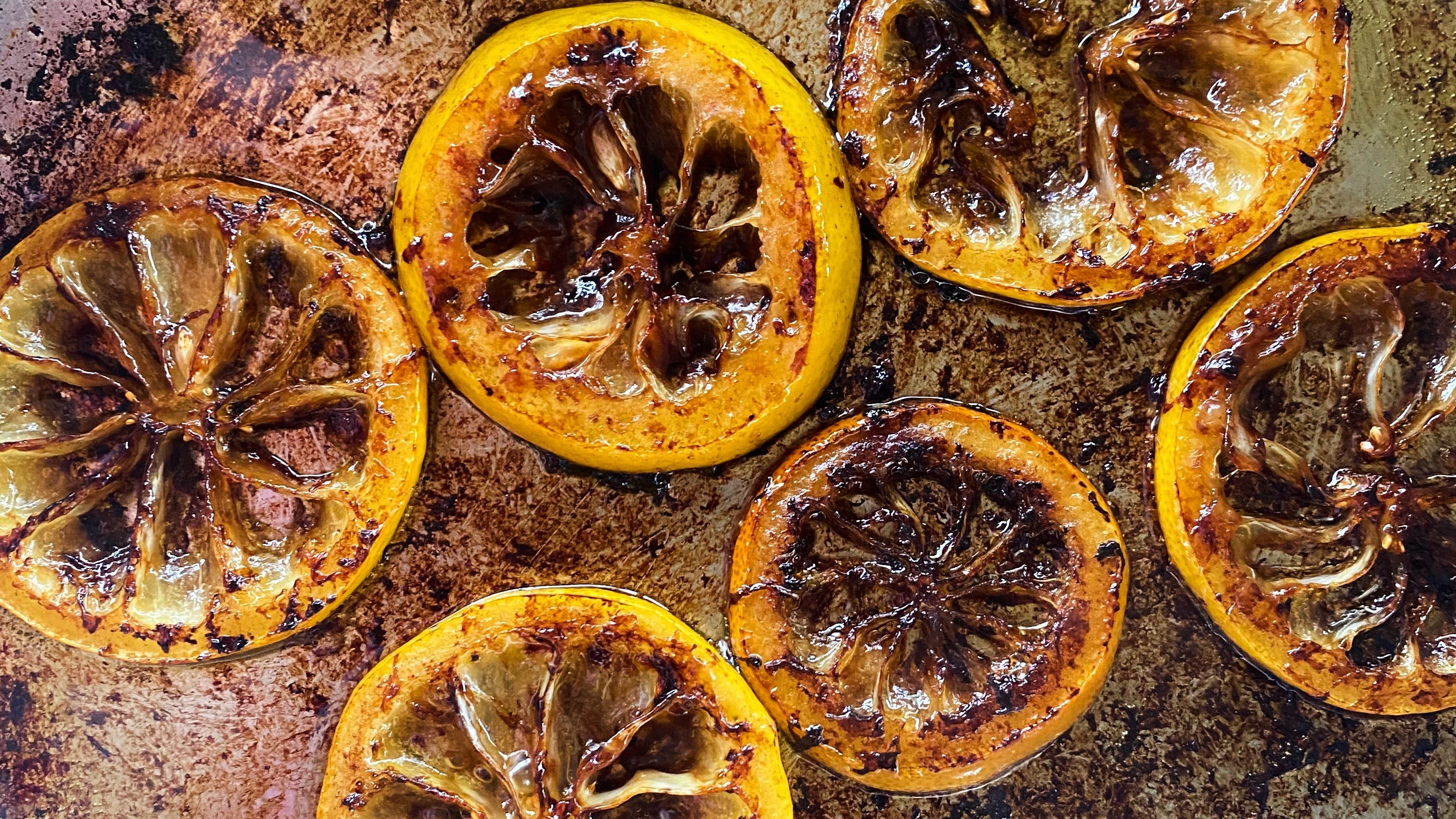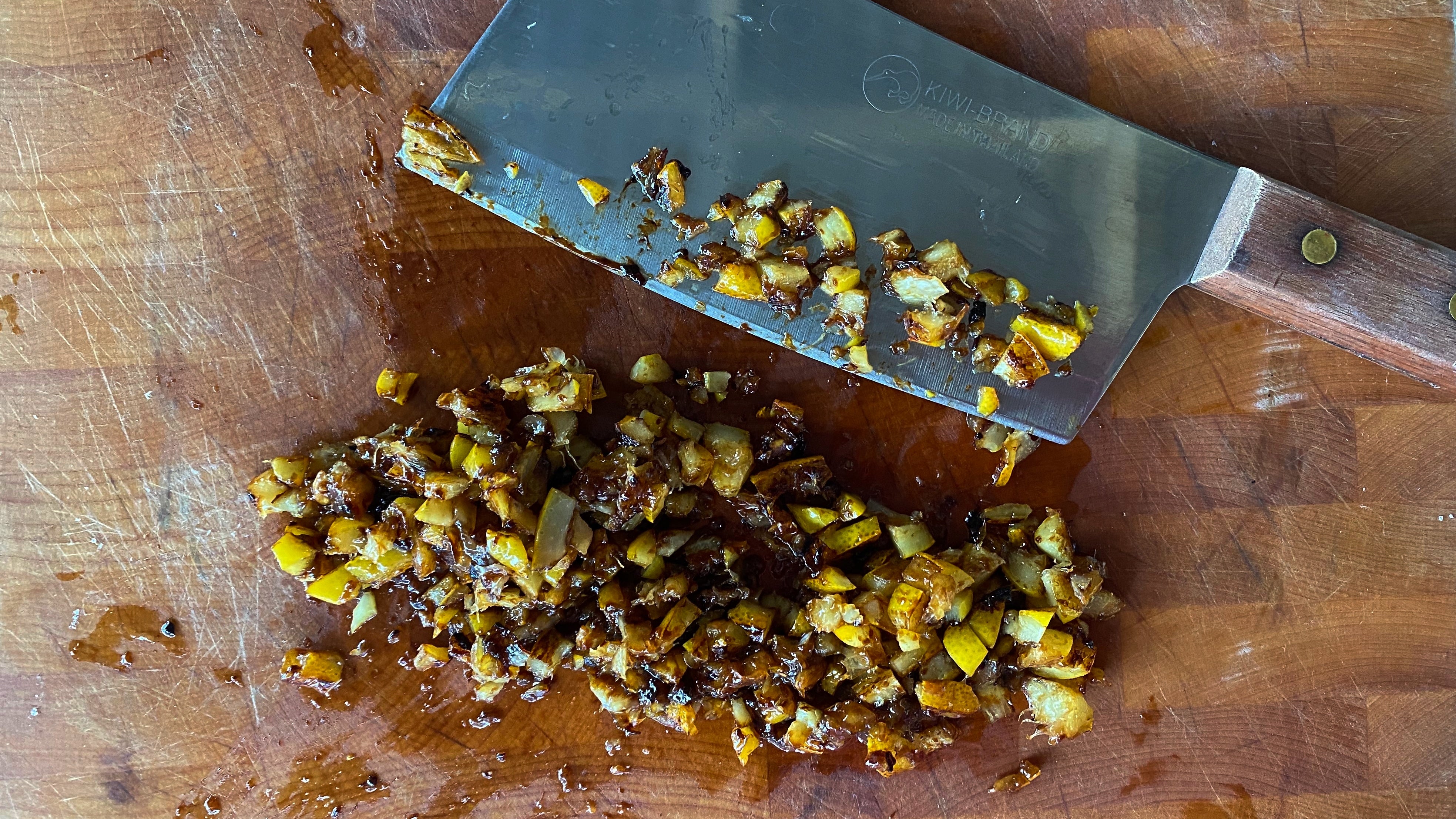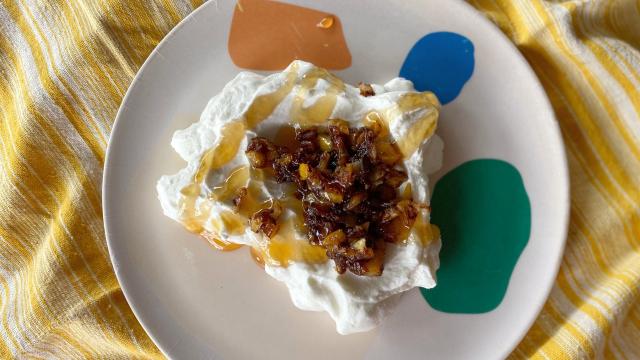We here at Skillet love to brown our food. We brown it deeply and thoroughly. We also love to caramelise. And while onions and other alliums get most of the attention when it comes to browning and caramelising, I’d like to bring your attention to another food that is transformed by the power of non-enzymatic browning and caramelisation: the humble lemon.
As an acidhead, lemons are important to me. Besides the obvious tart applications like lemonade, vinaigrettes, and tea, nearly every savoury food is improved with a squeeze of fresh lemon juice. But fresh lemon flavour isn’t what we’re talking about today. Caramelised lemons are not fresh, but they are delicious.

Pan frying a lemon in olive oil concentrates its existing flavours while creating new ones. The pulp melts away and the water evaporates, leaving behind caramelised sugars, softened peel, and lovely little browned bits. Eating a bit of caramelised lemon is an intense experience. It’s still quite tart, and slightly bitter, but anchored with small moments of roasted, almost toffee-like sweetness.
Caramelised lemons can be used in both sweet and savoury applications. Carolina Gelen uses them to make a caramelised lemon vinaigrette, but I’ve been sprinkling them on all sorts of things with wild abandon. My favourites, so far, are Greek yogurt with lots of honey (it kind of tastes like a refined lemon pie filling), every single rice dish, and bowls of creamy pasta. I think they’d also be incredible in a yogurt-based dip, or tossed with any roasted vegetable. Since caramelised lemons are so intense on their own, they do best when paired with sugar, fat, or both. Use them as an accent for the rich and sugary or the rich and salty, and be prepared to fall in love.

Caramelised lemons
Ingredients:
- Lemons, sliced into 1/8th-inch rounds, seeds removed
- Olive oil
Add enough oil to a large sauté pan or skillet to just cover the bottom. (Do not use cast iron as cast iron does not get along with acid.) Set the heat to medium-low. Add the lemons slices in a single layer and cook, flipping as needed, until all the pulp has disintegrated and the slices are well-browned on both side. The browner they are, the less tart they will be.
Transfer to a cutting board and chop them into little bits. Put the little bits on things, and put them in things. I recommend starting with a full-fat yogurt and lots of honey. (Do not try this with non-fat; you will hate yourself and the lemons, and it won’t be the fault of the lemons.)

Leave a Reply
You must be logged in to post a comment.